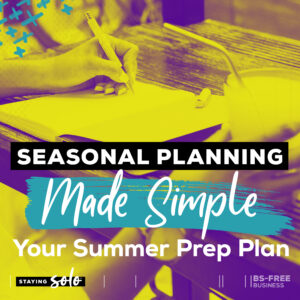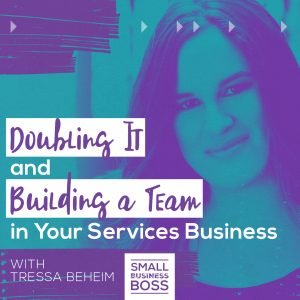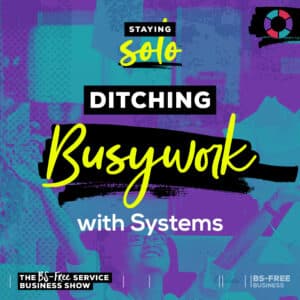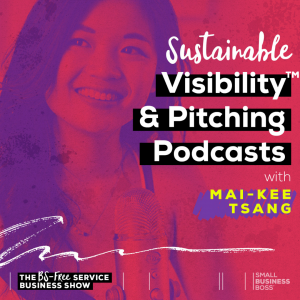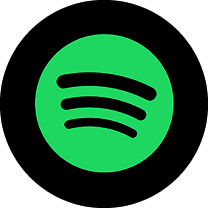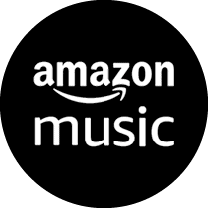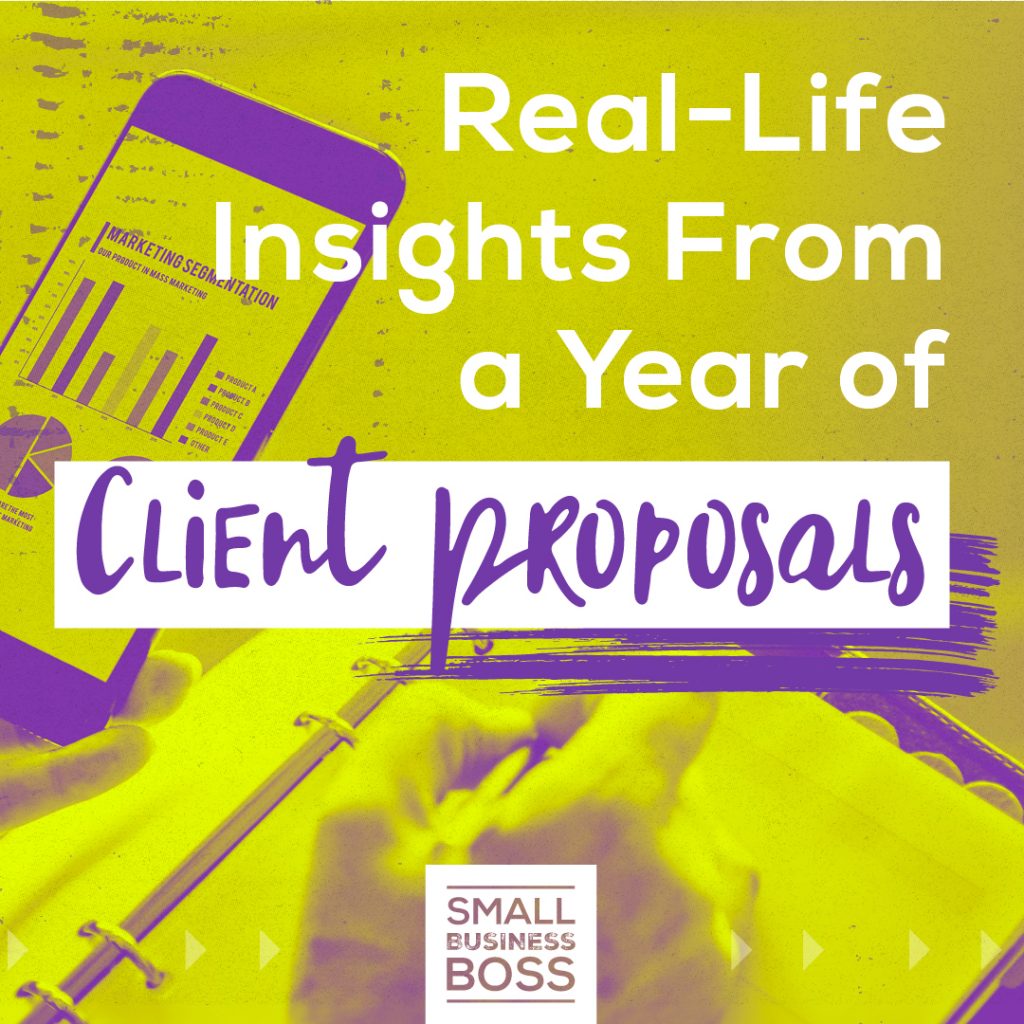
Search the site:
Episode 203: Real-Life Insights From a Year of Client Proposals
Back in 2016, when I started my marketing agency, one of the very first things I did was look at the entire sales process from the time we engaged a lead through to closing the deal. A big part of that process involves writing client proposals, so I set out to improve how we did it, including moving to an online-based proposal platform.
At the time, using Bidsketch was a major leap forward in the sales process as it made things much more professional and provided a way to collect data around the process. However, towards the end of 2018, I decided it was time to switch to a new platform that would improve the look and feel of our proposals while providing even more data. That led us to making the switch to Proposify at the start of 2019, which as I’ll share below, has definitely helped our overall sales process.
Before we get into the nitty-gritty of all of my lessons, I want to answer the one question you may have, which is, “do I even need a proposal?”
And the answer is a resounding yes.
Why You Should Be Writing Proposals, Even if You Have Packages
It’s no secret that I’m a big proponent of creating packages for your services as it’s the best way to clarify what you do (and don’t) offer and your pricing so you have clarity and confidence in what you’re selling.
Packages are an essential tool for your business, however, don’t be fooled into thinking you don’t need to write a proposal too.
If your clients are entrepreneurs, they’re likely used to purchasing from a sales page, so creating a proposal may seem like extra work.
Yes, it’ll take a bit of extra time, but the right proposal gives you a way to personalize the experience to your client. By doing that, you’re able to stand out and demonstrate that you’re the best possible choice.
Here’s the good news. In this scenario, you can create a proposal template and simply customize a few sections for each client. Sure it may take you 15 minutes, but that’s a worthy investment if it goes the extra mile to land the client.
If you sell to corporate clients who are either B2B or B2C, a proposal is expected. It’s standard operating procedure and it’s a way for you deliver more value than scoping out the engagement and pricing. Your proposal is an opportunity for you to position how you’ll work together and what they can expect when they hire you. A solid, thoughtful proposal can go a long way to landing the client and helps to create confidence in what it’ll be like if they say yes to working with you.
An Overview: Proposals by the Numbers
In 2019, we won 23 new clients, but did I write proposals for all of them?
I sure did! Every single one of those clients received a proposal from us. In total, I wrote 32 proposals for new clients in 2019.
Writing those proposals definitely took time, but not nearly as much time as you’d think. As there’s an established process including a content library and templates, I’m at the point where I can create a proposal in a matter of minutes.
In fact, I took a look at my timesheets and the hours logged on preparing proposals. On average, proposals take me between 30 and 45 minutes to put together, which is spent customizing the template, figuring out the budget and then proofreading it before I send it off. 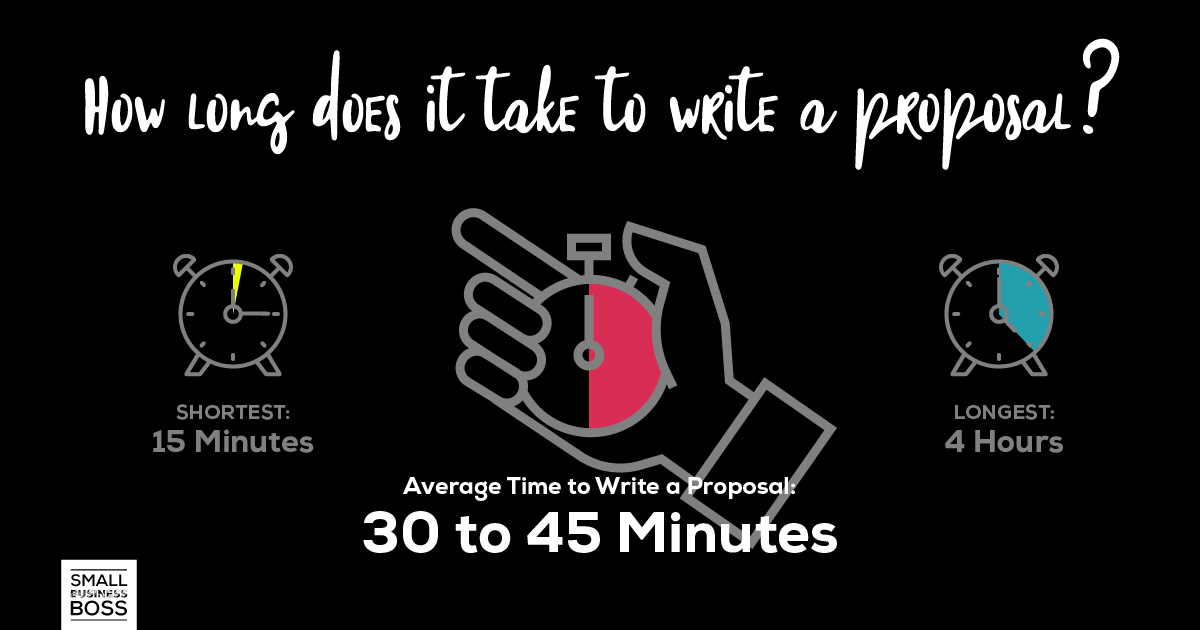
There were definitely a few exceptions. For one of the bigger clients landed last year, the two proposals I wrote for them took an average of three to four hours. And that was time well-spent as they’re solid, recurring monthly revenue. On the flip side, there were three proposals that took 15 minutes total to write and deliver.
How We Increased the Overall Win Rate
Of the 32 proposals written in 2019, we closed 74% of them. What’s interesting to me is that we wrote more proposals than the previous year, but our win rate actually went up.
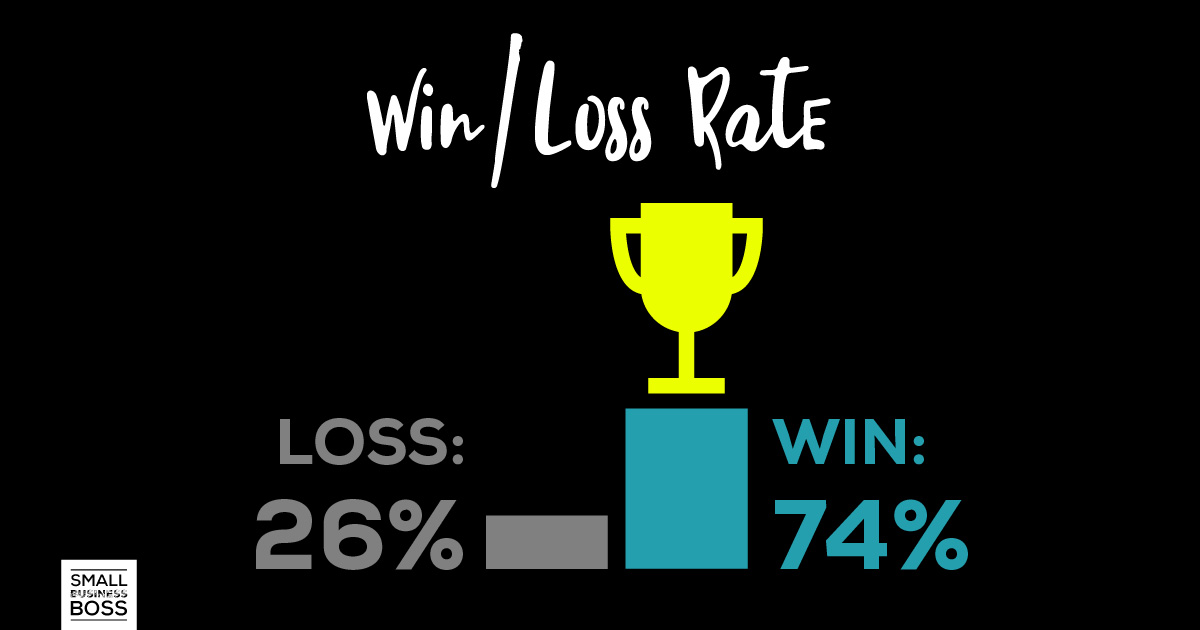
Since launching Scoop, the new client win rate has been between 50% to 60%.
So, why did the win rate increase in 2019? I can attribute a big part of that improved win rate to greater specificity in terms of our services and the clients we serve. In 2018, the agency was in flux, going from being a full-service digital marketing agency to one niched into content marketing only.
Plus, we went from working with a wider pool of clients to focusing on tech and professional services companies. That clarity meant that the potential clients we wrote proposals for were a good fit for our business.
Another contributor to our improved win rate was definitely having a more polished looking proposal. While our pre-2019 content was solid, our proposals were pretty basic. Here’s a side-by-side comparison of our 2018 versus our 2019 proposal look and feel: 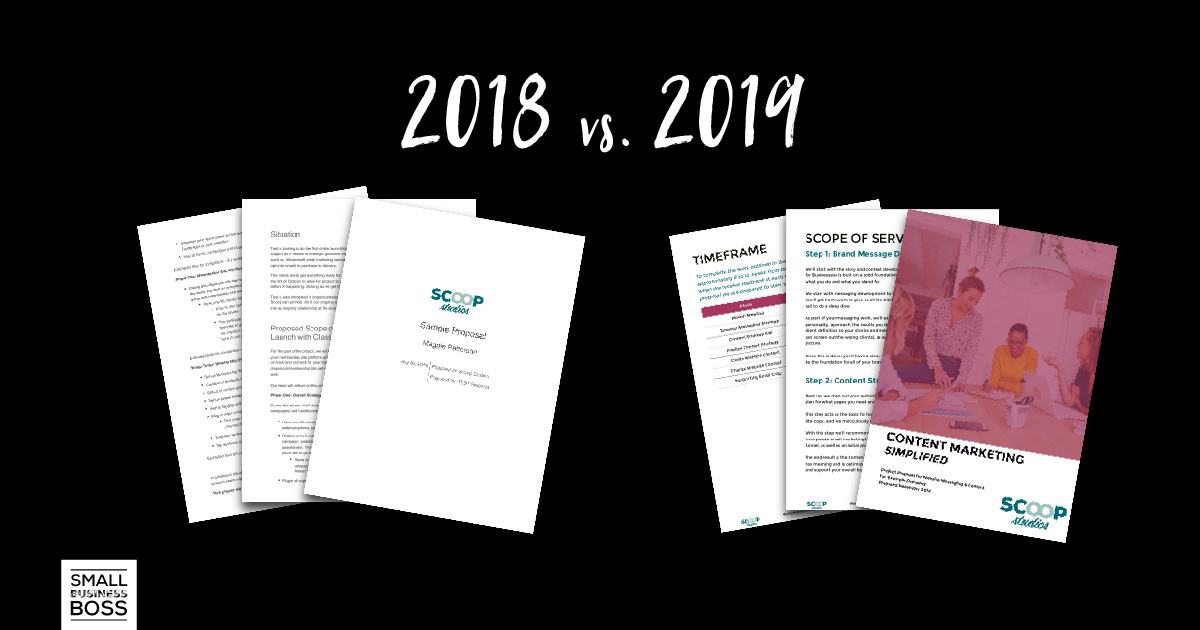
Lessons from Analyzing the Loss Rate
The proposals we won in 2019 added up to a 40% lift in year-over-year revenue, but what about the proposals we lost? If we’d won all of those proposals we’d have seen another 21.5% in revenue lift. 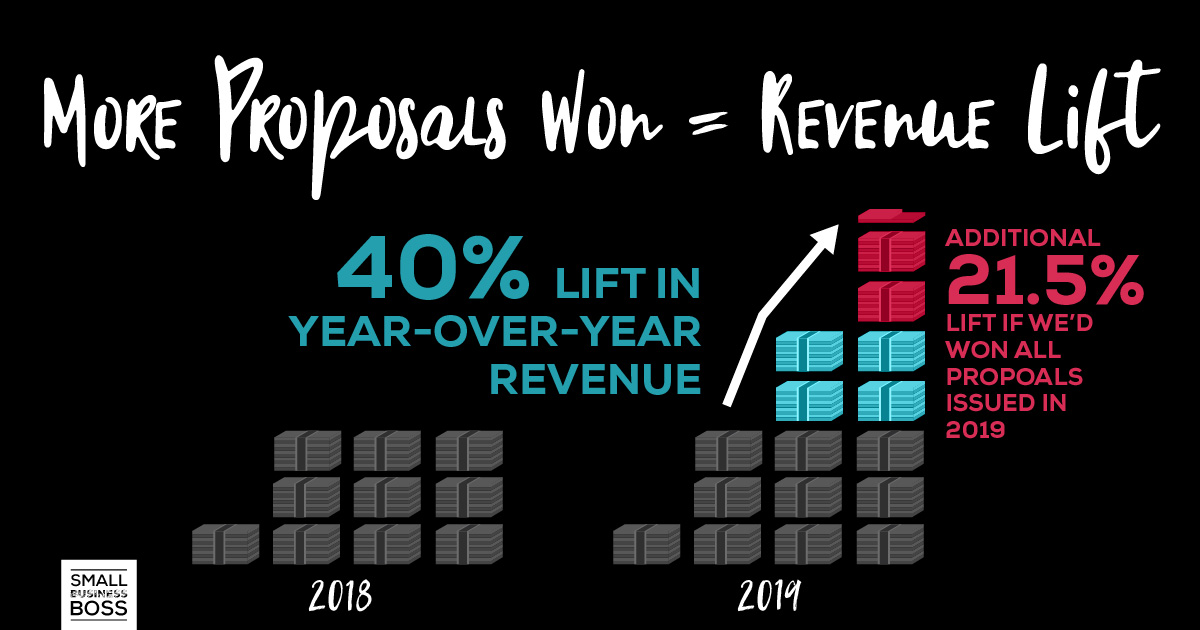
While I have no expectations of having a 100% close rate, looking closely at the loss rate provides a few insights.
One of my big questions was how much more revenue lift would we get by winning even 30% more proposals? For the record, that would have had us hitting a 50% (or more) overall revenue increase over 2018 numbers.
While we’re never going to get to a 100% win rate, the higher our close rate, the more revenue that’s coming in the door.
For 2020, my goal is to reduce our loss rate so we can improve our win rate. To do that, it means writing fewer proposals for clients that I’m not 100% confident I want to pursue. I should only be writing proposals for the most qualified clients, and if I reflect back at a few of the losses, I should have disqualified them after the consult call. In two of the cases, I know we lost on price because I wasn’t super excited about their company or product, and I factored that into the price.
Speaking of pricing, of the nine deals that we didn’t close, price or budget was cited as the primary reason factor in 77% of them.
The remaining 23% of proposals (a grand total of two) that we didn’t close were due to internal changes. In one situation, the internal contact who was going to hire us left, so they didn’t proceed. And in the other instance, they decided to do the work internally, which is corporate code for, “this isn’t in the budget.”
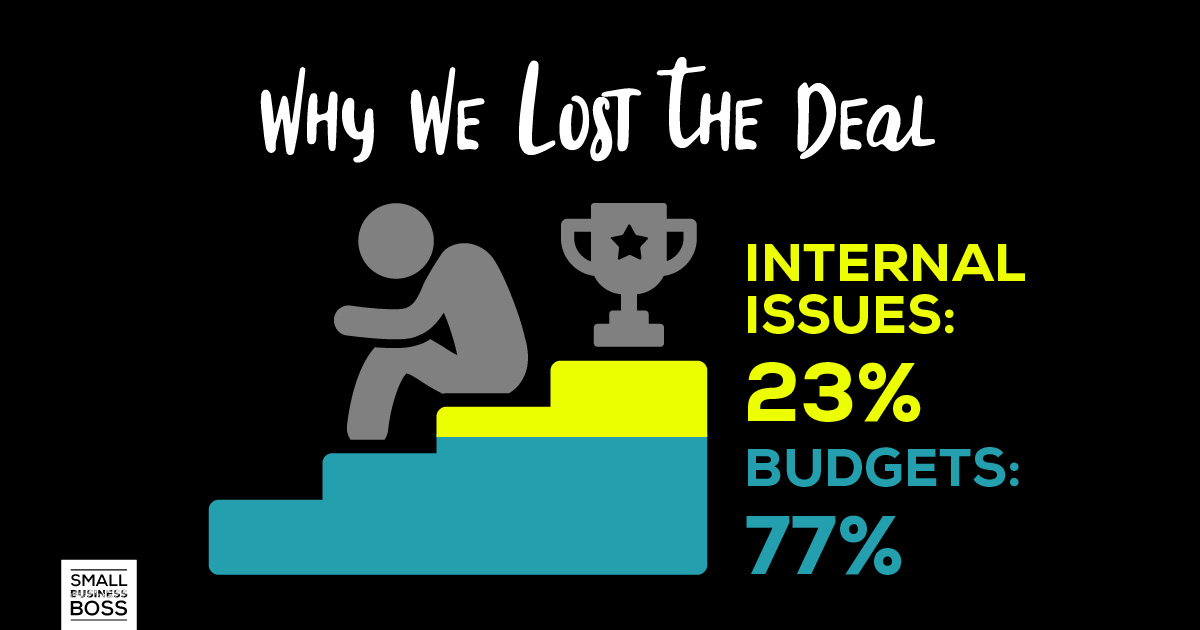
Using Real-Time Metrics to Help Close Sales
When it comes to closing deals, my secret weapons are the metrics around when (and for how long) the potential client is viewing the proposal. Having access to this information makes all the difference when it comes to my follow-up.
Instead of being in a situation where I’m sitting around waiting for a response, I know when they’ve viewed the proposal, for how long they looked at it, and what sections they’re looking at. Here’s an example from Proposify:
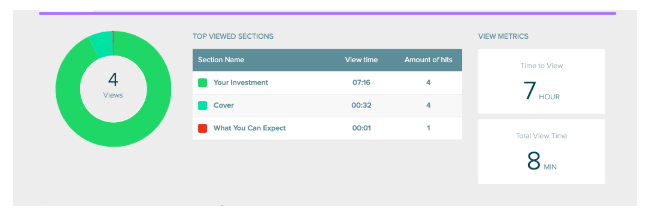
In the case above, you can see the prospective client is mostly concerned with the budget. That enabled me to tailor my follow-up in a way to open the door to further discussion about not just the proposal, but the pricing. From this point, we were able to negotiate a pricing structure that helped them mitigate some of the risk around this large project.
In sharp contrast to the first example, this potential client is all about the “what you can expect” part of the proposal, and clearly may have questions about how exactly we’re going to work together. And interestingly for them, price isn’t a factor, so that gives me some data to work with for future engagements with them.

And finally, there’s this potential client who did their homework and read the full proposal in great detail. In my follow-up with this client, my focus was on seeing what it would take to get this across the finish line as I know they had all the information they needed to make a decision. (Still waiting on this one and fingers are crossed!)
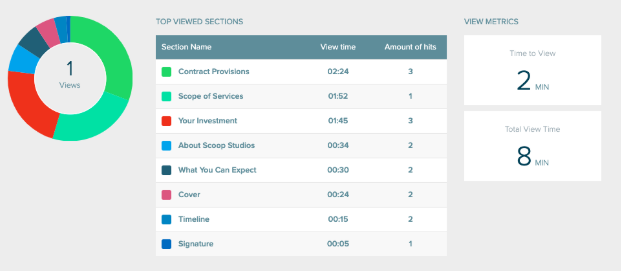
Going From Proposal to Close: How Long Did it Really Take?
One of the big questions I get from the service-based business owners that I mentor is around how fast they should follow-up on proposals.
On average, I follow-up after sending a proposal in three to four days, as while they may not be ready to make a decision, I want them to know that I’m ready for any questions they have. Plus, I want them to feel like if they say yes, we have room for them and that we’ll be proactive.
A quick word here. Timely follow-up is not pushy. It’s just good business. In fact, being sluggish on your follow-up after sending a proposal can create the feeling that you’re not organized, don’t care or you’re simply too busy to work with them.
Never underestimate the assumptions a potential client will make about your follow-up or lack thereof. I’d rather have them know we’re keen to get started than have them deciding we’re not a good fit due to taking too long to follow-up.
I know that the process of getting from a proposal to close can feel painstaking at times, which is why I wanted to share some average numbers on how long it took for clients to say yes. 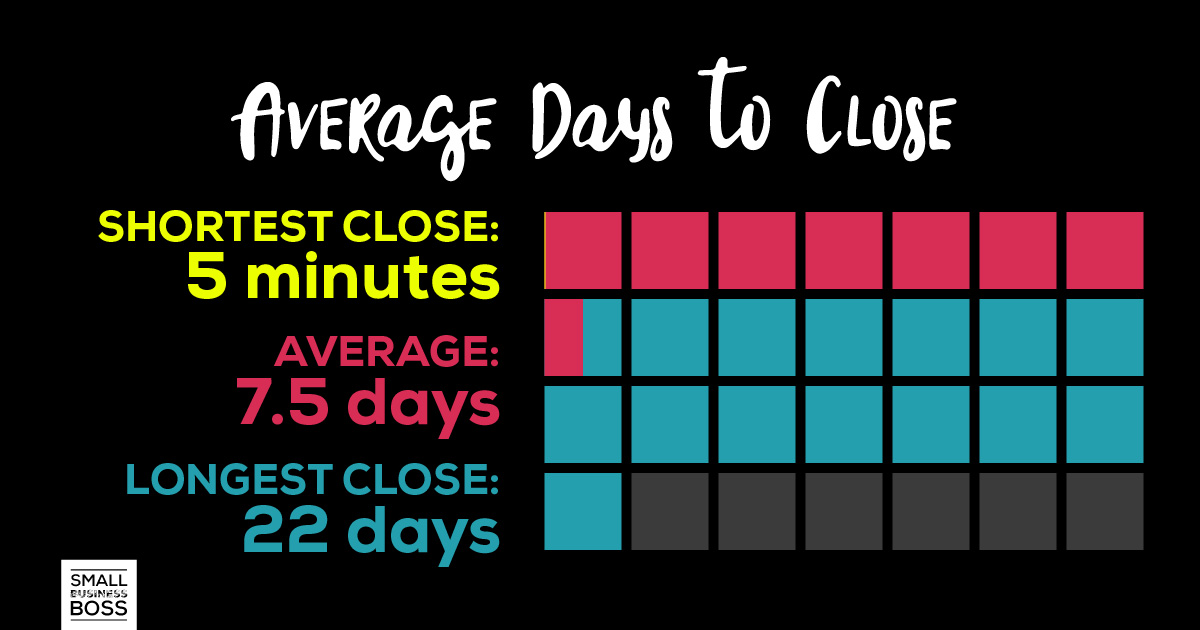
Average days to close: 7.5 days
Longest close: 22 Days
Shortest close: 5 Minutes
Honestly, I was surprised that the longest close wasn’t much much longer as the decision-making process can be complex for our corporate clients. That said, the average days to close feels incredibly healthy and affirms to me that our proposals do the job they’re supposed to do.
Next Steps for Your Client Proposals
When it comes to booking clients and building your business, your proposals are an essential part of your sales process. Even if you’re amazing at finding clients, if things break down in the sales process, it doesn’t matter how many potential clients you have coming through your door.
If you’re not already doing proposals, consider adding them as a way to stand out and personalize the experience for your prospects.
And if you’re already doing proposals, take one or two of the lessons from this post and see how you may be able to tweak your process. Here are a few ideas if you’re not sure where to start:
-
- Streamline Your Proposal Process: Consider using a tool like Proposify, updating your templates or creating a content library. Look for ways to save time each and every time you write a proposal.
- Track Your Win/Loss Rate: Keep track of your win/loss rate on an ongoing basis to see what you may be able to learn. As you can see from my win/loss metrics above, I have some actionable items for 2020 to keep improving.
- Follow-Up Like a Boss: Sending the proposal is one thing, but how you follow-up on that proposal matters just as much. Follow-up in a timely manner, and do so in a way that’s aligned with the client’s needs. Do they have questions? Need more details? To have another call? Figure out what they need and give them that.
I’ve often joked that proposals are one of my superpowers, but honestly, I truly believe they are. I may not be the smoothest salesperson, or the most polished agency owner around, but when I deliver a proposal, it gets the job done.
What I want for you after reading this post is to build your proposal superpowers too, because they’re so critical to your success. Take the lessons and insights into action for your business, and let the wins start racking up.
If you want help with your proposals, grab a copy of the Winning Proposal Template in the Small Business Boss Vault.
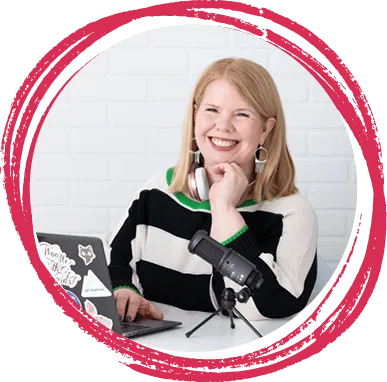
I’m Maggie Patterson (she/her), and services businesses are my business.
I have 20+ years of experience with client services, am a consultant for agency owners, creatives, and consultants, and vocal advocate for humane business practices rooted in empathy, respect, and trust.
Read or Listen to the Latest
For Solo Business Owners
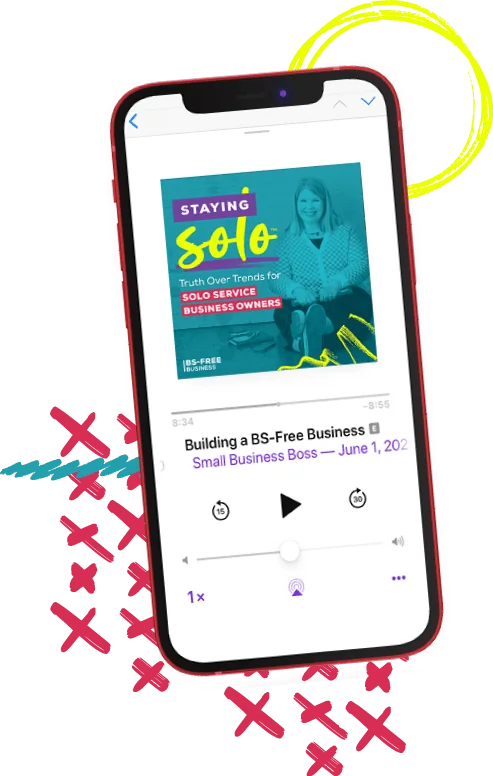
Growing a solo service business is tough.
It’s even harder when you’re bombarded with BS advice that steers you away from your values and why you started your business in the first place.
This is the podcast for solo creatives and consultants who want to remain as a team of one and have zero interest in the hustle and grind of typical business teachings.
Subscribe now and never miss an episode.
For Micro Agency Owners
Most podcasts for agency owners obsess over revenue growth as the ultimate success metric.
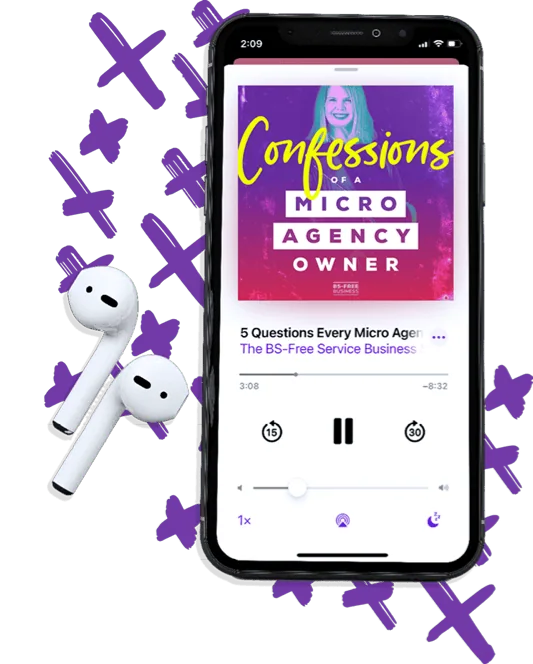
But here’s the truth: not everyone wants to make millions. Your goal might be to build a sustainable business that lets you have a life and doesn’t run you into the ground.
Join me as I spill my shameless confessions and share everything I’ve learned about building a micro agency that skips the BS of tired and typical agency teachings.
Follow Now on All Major Podcast Platforms

